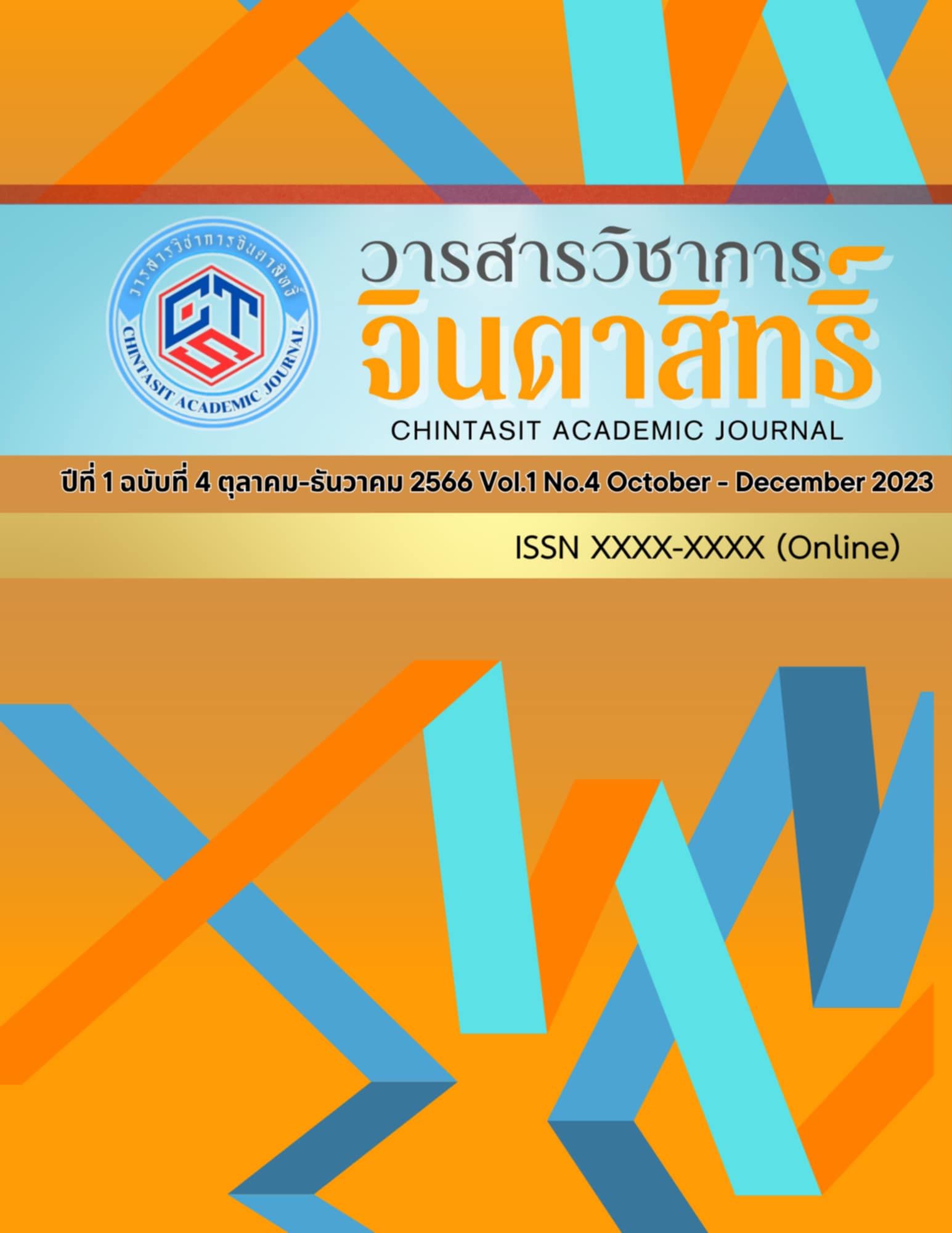ภาวะผู้นำแบบบารมีในยุคดิจิทัล: การปรับตัวและความท้าทาย
Main Article Content
บทคัดย่อ
บทความนี้มุ่งศึกษาการปรับตัวและความท้าทายของภาวะผู้นำแบบบารมีในบริบทของยุคดิจิทัล โดยวิเคราะห์ผลกระทบของการเปลี่ยนแปลงทางเทคโนโลยีต่อรูปแบบการนำและการสร้างอิทธิพลของผู้นำแบบบารมี การศึกษาพบว่าแม้คุณลักษณะหลักของภาวะผู้นำแบบบารมี เช่น ความสามารถในการสร้างแรงบันดาลใจและการมีวิสัยทัศน์ที่ชัดเจน ยังคงมีความสำคัญ แต่ผู้นำจำเป็นต้องพัฒนาทักษะดิจิทัลและปรับเปลี่ยนวิธีการสื่อสารให้เหมาะสมกับยุคสมัย บทความนำเสนอแนวทางการปรับตัวที่สำคัญ ได้แก่ การพัฒนาความเข้าใจในเทคโนโลยี การใช้สื่อดิจิทัลอย่างมีประสิทธิภาพ การสร้างวิสัยทัศน์ที่ผสมผสานเทคโนโลยีกับคุณค่าทางมนุษย์ และการส่งเสริมวัฒนธรรมนวัตกรรมในองค์กร นอกจากนี้ ยังวิเคราะห์กรณีศึกษาของผู้นำที่ประสบความสำเร็จในการปรับตัวสู่ยุคดิจิทัล และเสนอแนะแนวทางการพัฒนาภาวะผู้นำแบบบารมีสำหรับอนาคต บทความสรุปว่าการผสมผสานระหว่างพลังของบารมีกับความสามารถในการใช้เทคโนโลยีดิจิทัลอย่างชาญฉลาดจะเป็นกุญแจสำคัญของภาวะผู้นำที่มีประสิทธิภาพในยุคดิจิทัล
Article Details

This work is licensed under a Creative Commons Attribution-NonCommercial-NoDerivatives 4.0 International License.
วารสารวิชาการจินตาสิทธิ์ อยู่ภายใต้การอนุญาต Creative Commons Attribution-NonCommercial-NoDerivatives 4.0 International (CC BY-NC-ND 4.0) เว้นแต่จะระบุไว้เป็นอย่างอื่น โปรดอ่านหน้านโยบายของเราสำหรับข้อมูลเพิ่มเติมเกี่ยวกับการเข้าถึงแบบเปิด ลิขสิทธิ์ และการอนุญาต
References
Antonakis, J., Bastardoz, N., Jacquart, P., & Shamir, B. (2016). Charisma: An ill-defined and ill-measured gift. Annual Review of Organizational Psychology and Organizational Behavior, 3, 293-319.
Avolio, B. J., Kahai, S., & Dodge, G. E. (2000). E-leadership: Implications for theory, research, and practice. The Leadership Quarterly, 11(4), 615-668.
Bass, B. M. (1985). Leadership and performance beyond expectations. Free Press.
Bass, B. M., & Avolio, B. J. (1993). Transformational leadership and organizational culture. Public Administration Quarterly, 17(1), 112-121.
Beyer, J. M., & Browning, L. D. (1999). Transforming an industry in crisis: Charisma, routinization, and supportive cultural leadership. The Leadership Quarterly, 10(3), 483-520.
Burns, J. M. (1978). Leadership. Harper & Row.
Castells, M. (2010). The rise of the network society (2nd ed.). Wiley-Blackwell.
Conger, J. A. (1990). The dark side of leadership. Organizational Dynamics, 19(2), 44-55.
Conger, J. A., & Kanungo, R. N. (1987). Toward a behavioral theory of charismatic leadership in organizational settings. Academy of Management Review, 12(4), 637-647.
Conger, J. A., & Kanungo, R. N. (1998). Charismatic leadership in organizations. Sage Publications.
Conger, J. A., Kanungo, R. N., & Menon, S. T. (2000). Charismatic leadership and follower effects. Journal of Organizational Behavior, 21(7), 747-767.
Cortellazzo, L., Bruni, E., & Zampieri, R. (2019). The role of leadership in a digitalized world: A review. Frontiers in Psychology, 10, 1938.
Grover, V., & Froese, T. M. (2016). Knowledge management across the globe: An international survey of construction firms. Canadian Journal of Civil Engineering, 43(7), 591-599.
Hofmann, D. A., & Jones, L. M. (2005). Leadership, collective personality, and performance. Journal of Applied Psychology, 90(3), 509-522.
House, R. J. (1976). A 1976 theory of charismatic leadership. In J. G. Hunt & L. L. Larson (Eds.), Leadership: The cutting edge (pp. 189-207). Southern Illinois University Press.
House, R. J., Spangler, W. D., & Woycke, J. (1991). Personality and charisma in the U.S. presidency: A psychological theory of leader effectiveness. Administrative Science Quarterly, 36(3), 364-396.
Howell, J. M., & Avolio, B. J. (1992). The ethics of charismatic leadership: Submission or liberation? Academy of Management Executive, 6(2), 43-54.
Khurana, R. (2002). The curse of the superstar CEO. Harvard Business Review, 80(9), 60-66.
Maccoby, M. (2000). Narcissistic leaders: The incredible pros, the inevitable cons. Harvard Business Review, 78(1), 68-77.
McAfee, A., & Brynjolfsson, E. (2012). Big data: The management revolution. Harvard Business Review, 90(10), 60-68.
Messenger, J. C., & Gschwind, L. (2016). Three generations of telework: New ICTs and the (r)evolution from home office to virtual office. New Technology, Work and Employment, 31(3), 195-208.
Mumford, M. D., Scott, G. M., Gaddis, B., & Strange, J. M. (2002). Leading creative people: Orchestrating expertise and relationships. The Leadership Quarterly, 13(6), 705-750.
Nadella, S., Shaw, G., & Nichols, J. T. (2017). Hit refresh: The quest to rediscover Microsoft's soul and imagine a better future for everyone. Harper Business.
Parker, G. G., Van Alstyne, M. W., & Choudary, S. P. (2016). Platform revolution: How networked markets are transforming the economy and how to make them work for you. W. W. Norton & Company.
Petrou, P., Demerouti, E., & Schaufeli, W. B. (2018). Crafting the change: The role of employee job crafting behaviors for successful organizational change. Journal of Management, 44(5), 1766-1792.
Shamir, B., House, R. J., & Arthur, M. B. (1993). The motivational effects of charismatic leadership: A self-concept based theory. Organization Science, 4(4), 577-594.
Tourish, D., & Vatcha, N. (2005). Charismatic leadership and corporate cultism at Enron: The elimination of dissent, the promotion of conformity and organizational collapse. Leadership, 1(4), 455-480.
Waldman, D. A., & Yammarino, F. J. (1999). CEO charismatic leadership: Levels-of-management and levels-of-analysis effects. Academy of Management Review, 24(2), 266-285.
Waldman, D. A., Ramirez, G. G., House, R. J., & Puranam, P. (2001). Does leadership matter? CEO leadership attributes and profitability under conditions of perceived environmental uncertainty. Academy of Management Journal, 44(1), 134-143.
Weber, M. (1947). The theory of social and economic organization (A. M. Henderson & T. Parsons, Trans.). Oxford University Press.

